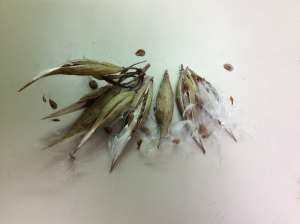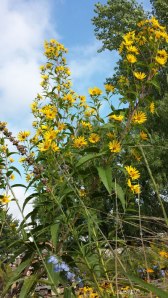Earlier this month I announced the Nebraska Pollinator Habitat Certification program. We hope that you will consider certifying your habitat or start the process of planning one in your landscape. One of the important sections of the application is plant selection. Your pollinator habitat must have plant diversity and plants blooming during the spring, summer and fall months.
Spring Flowering plants that bloom in March, April and May are extremely important for early pollinators such as mason bees, honey bees and queen bumblebees.
MJ

Glory-of-the-snow

wild geranium

Prairie ragwort blooming now in the Cherry Creek Habitat.

Eastern redbud tree.

Wild plum
Acer rubrum – Red Maple
Allium textile – Textile Onion
Aquilegia canadensis – Columbine
Baptisia australis – Blue False Indigo
Baptisia australis v. minor – Dwarf False Indigo
Ceanothus americanus – New Jersey Tea
Cercis canadensis – Redbud
Chionodoxa sp. – Glory-of-the-Snow
Cornus sp. – Dogwood
Erysimum asperum – Western Wallflower
Geranium maculatum – Wild Geranium
Leucocrinum montanum – Starlily
Lindera benzoin – Spicebush
Lithospermum incisum – Narrowleaf Stoneseed
Malus sp. – Apple, Crabapple
Phlox andicola – Prairie Phlox
Phlox bifida – Sand Phlox
Phlox divaricata – Blue Phlox
Phlox hoodii – Spiny Phlox
Prunus sp. – Pear, Plum
Prunus virginiana – Chokecherry
Pulsatilla patens – Pasqueflower
Rhus aromatica – Fragrant Sumac
Rhus trilobata – Skunkbush Sumac
Rubus sp. – Blackberry, Raspberry
Salix humilis – Prairie Willow
Sanguinaria canadensis – Bloodroot
Senecio plattensis – Prairie Ragwort
Sheperdia argentea – Buffaloberry
Thermopsis rhombifolia – Prairie Thermopsis
Viola pedatifida – Bird’s Foot Viola
Yucca glauca – Yucca, Soapweed


















